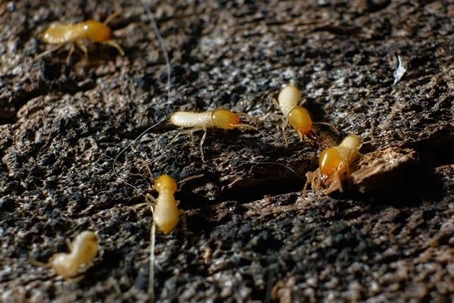As South Carolina residents, we know a thing or two about summer struggles. Many people think that South Carolina might just be one of the hottest places on earth. There’s not a lot of breeze in the middle of the state, and the hot, humid air seems to sit stagnantly, baking anything in its path. Most folks have to escape to the coastal towns to feel the ocean breeze, which is why the South Carolina beach experiences are some of the best in the world.
However, South Carolinians have to deal with another summer scourge that can’t be alleviated by a day trip to the beach: termites. Come the warm months of summer, termites are much more likely to swarm (meaning they’re creating more colonies), but is that the only time that these pests can do damage?
Termite Damage
Let's be clear. If you’ve got a termite infestation, they are eating the wooden structures of your home, year-round. Just because they will typically swarm during warm months after a rainstorm does not mean that they’re just asleep in the fall, winter, or spring. No, they’re feeding when it’s cold outside too, causing Americans billions of dollars worth of damage to their homes each year. Most termite infestations require repairs of $3,000 and above if they go unchecked for too long.
So how can you tell if you’ve got a problem? Most termite damage occurs within the structure of a home, so you never really see it until it’s severe. By then, your home is hurting and your wallet is well on its way there.
Try to be on the lookout for the following signs of termite activity to avoid damage that requires expensive repairs:
- Frass is a combination of wood pellets and termite droppings that dry woodworker termites throw out of their tunnels.
- Swarming. In the warm months, you might see a termite swarm in the air (a grey, buzzing cloud, typically near the outside walls of your home or a nearby light post).
- Tight-fitting doors and windows. This is a good indication of damage within the wood
- Clicking noises within the walls. These are almost impossible to detect but don’t ignore them if you think you can hear the sound. It could save you thousands.
Eradication/Prevention
Once you realize you’ve got an infestation, there is not much you can do. At that point, professional remedies are your only complete solution. So let’s get out in front of the problem. You can try to prevent termite activity on your property by:
- Controlling moisture. leaking pipes and condensation create soft, moist wooden structures in the foundation of your home. That’s a termite’s favorite food.
- Limiting soil-to-wood contact. Keep a small buffer between any wooden parts of your home (like a porch or even part of the foundation) and the soil. If termites can’t travel through the soil and get to the wood, they might not make it to your house.
- Practicing proper rain protection. Having a gutter system that will channel rainwater away from the side of your home will prevent water from pooling up next to the wooden parts of your foundation.
- Storing wood away from your property. Never store your firewood in contact with (or even close to) a structure that is susceptible to termites. They’ll begin with the firewood and move right on to whatever is next to it.
No matter how many preventative strategies you employ, termites can still find ways into your home. And you might not recognize the signs until it’s too late. If you want to save thousands of dollars, choose a remedy with guaranteed results. At the first sign of termites (or for the best form of termite prevention), contact The Original Bugman Pest Elimination, Inc. We will keep your home termite-free, long term. Learn more about our general pest control or termite treatment options.
Schedule Your Free Inspection
Complete the form below to schedule your no-obligation inspection.

